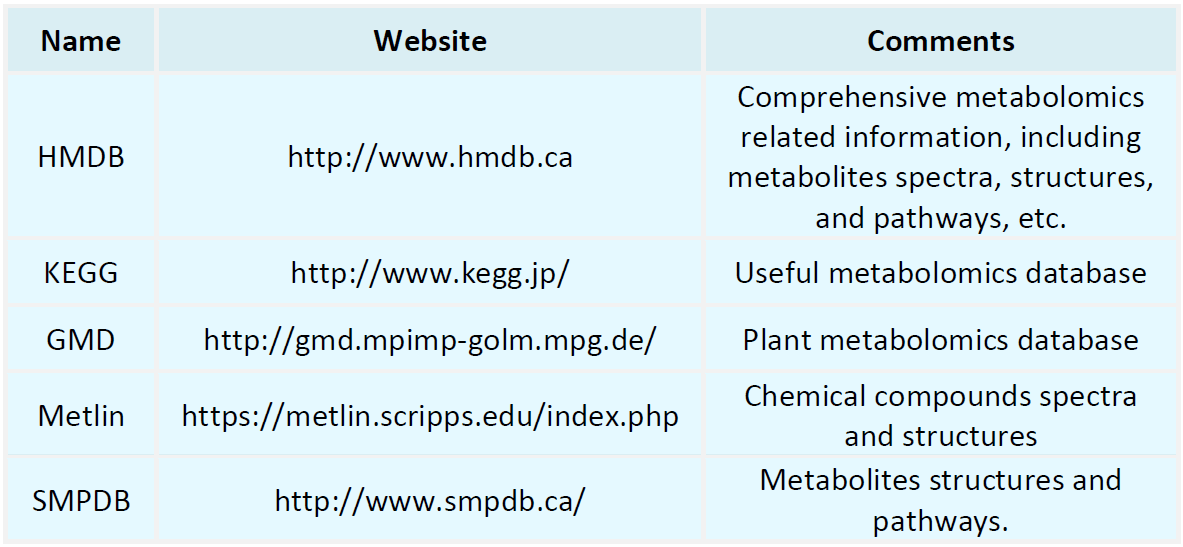Resources
Proteomics Databases

Metabolomics Databases

-
• What Is the Difference Between Spatial Proteomics and Spatial Transcriptomics?
Spatial proteomics and spatial transcriptomics are two fundamental technologies in the field of spatial omics. Both aim to characterize the molecular distribution within cells and tissues in a spatially resolved manner, but they differ in the types of biomolecules analyzed and their technical strategies. Definitions and Research Objects In summary: Spatial proteomics reveals what cells are doing at specific locations. Spatial transcriptomics reveals what cells are preparing to do at specific......
-
• Differences Between Peripheral and Integral Membrane Proteins and Methods for Their Identification
Membrane proteins and integral membrane proteins are critical components of the cellular membrane system, playing essential roles in signal transduction, molecular transport, and cell recognition. Although both types of proteins are associated with biological membranes, they differ significantly in structural characteristics, membrane association mechanisms, and functional properties, resulting in distinct experimental identification strategies. Differences Between Membrane Proteins and Integral Memb......
-
• Increasing Sensitivity and Coverage in Spatial Proteomics
Spatial proteomics integrates proteomics with spatial tissue information, aiming to generate high-resolution maps of protein expression and localization at the subcellular and sub-tissue scale. In research areas such as the cancer microenvironment, neurodegenerative diseases, and developmental biology, spatial proteomic data can uncover biological mechanisms that are often inaccessible to conventional bulk proteomics. However, spatial proteomics currently faces two fundamental challenges: Insufficient......
-
• Mass Spectrometry-Based Spatial Proteomics: Methods, Challenges, and Applications
Spatial proteomics, an emerging technology, integrates the quantitative capabilities of mass spectrometry-based proteomics with the preservation of tissue spatial information, redefining our understanding of tissue heterogeneity, cell–microenvironment interactions, and the spatial progression of diseases. Unlike traditional linear extract-and-analyze workflows, spatial proteomics aims for a three-dimensional understanding of in situ expression, local distribution, and spatial correlation. This approac......
-
• Types and Functions of Histone Post‑Translational Modifications
In eukaryotic cells, DNA is not present in a free or naked form within the nucleus but is instead highly organized, wrapped around histone octamers to form nucleosomes, which in turn assemble into the chromatin architecture. Beyond serving as a structural scaffold for DNA, histones play essential regulatory roles, particularly through a diverse array of post-translational modifications (PTMs) that precisely modulate chromatin dynamics and gene expression. Histone PTMs constitute a central mechanism of......
-
• Understanding Histone Post-Translational Modification Analysis: Principles and Applications
In eukaryotic cells, DNA is wrapped around histone octamers to form nucleosomes, the fundamental units of chromatin. Histones are dynamic proteins, and their N-terminal tails are subject to various post-translational modifications (PTMs), including acetylation (Ac), methylation (Me), phosphorylation (P), and ubiquitination (Ub), among others. These modifications play crucial roles in diverse biological processes, such as gene expression, cell fate determination, development, and disease, by altering c......
-
• Application of Spatial Proteomics in Cancer Research and Biomarker Discovery
The development of cancer is not an isolated event but a highly spatial and heterogeneous biological process. Traditional proteomics techniques have identified numerous potential biomarkers; however, due to the lack of spatial context, they often fail to capture the critical dynamics within the tumor microenvironment. Spatial proteomics, which integrates proteomics with spatial imaging, provides a new perspective for cancer research. What is Spatial Proteomics? Definition and Technical Pathways Spat......
-
• Membrane Protein Identification by Shotgun Proteomics
Membrane proteins are widely distributed across intracellular and extracellular membrane systems and play crucial roles in signal transduction, material transport, and cell recognition. Although they constitute only approximately 30% of proteins encoded by the human genome, membrane proteins account for more than 60% of known drug targets. However, their strong hydrophobicity, tendency to aggregate, and extraction challenges have long made them a difficult class of proteins in proteomics studies. Amon......
-
• Principles of Olink Proteomics
In high-throughput proteomics research, a long-standing challenge has been achieving sensitive and specific protein detection from minimal sample volumes. The Olink® proteomics platform addresses this by introducing the Proximity Extension Assay (PEA), which ingeniously combines the specificity of antibody recognition with the high sensitivity of nucleic acid amplification, thereby overcoming fundamental limitations of conventional protein detection techniques. Core Mechanism of Olink Proteomics: Pro......
-
• Standardized Workflow Interpretation for LC-MS-Based Host Cell Protein (HCP) Analysis
In the large-scale manufacturing of recombinant protein therapeutics, such as monoclonal antibodies, fusion proteins, and enzyme replacement therapies, host cell proteins (HCPs) are inevitable process-related impurities. These contaminants pose significant risks to drug safety, efficacy, and stability. Even following extensive purification steps, residual HCPs may still trigger immunogenic responses, accelerate drug clearance, or interfere with the function of the therapeutic protein. While enzyme-lin......
How to order?







